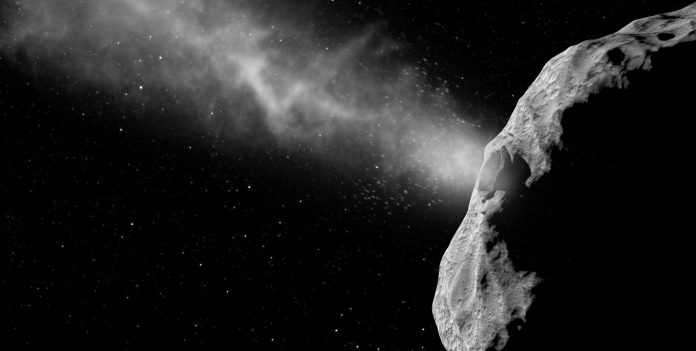NASA’s Near Earth Object (NEO) Program released a map this week detailing the location of hundreds of small asteroids that have entered the Earth’s atmosphere in the last couple decades.
In a public letter released via the isupportaim.com, planetary scientists and space experts from EU explained that the Rosetta Mission, with a space probe that successfully landed on a comet, returned “a powerhouse of scientific knowledge” about the small rocks in our Solar System. Now, they say, the community must go further by launching the Asteroid Impact Mission, or AIM, a follow-up to Rosetta that could further expand our knowledge of the small bodies in the Solar System, and help scientists develop a robotic spacecraft that will act as a barrier against NEOs.
Scientists said AIM would launch in fourth quarter of 2020, and it would travel to a binary asteroid system, the Didymos asteroids. The pair will come within 16 million kilometers of our planet in 2022. The 800m-diameter asteroid is orbited by a 160m natural satellite, which they call the Didymoon, and it is the main focus of the space mission.
The EU spacecraft will perform high-resolution measurements of the small body to build detailed maps of its surface, including its subsurface and interior structures.
AIM is part of the AIDA, or the Asteroid Impact & Deflection Assessment mission. If approved, AIM would be EU’s contribution to the much-needed mission.
Around four months after the AIM’s arrival, a NASA-led mission will arrive there, the DART–or, the Double Asteroid Redirection Test–which will crash straight into the asteroid’s moon.
AIM would provide the bird’s-eye view for DART, watching to see how the NASA-led spacecraft changes the moon’s orbit around Didymos.
Last year, Patrick Michel, the lead of the AIM mission, said that to protect our planet from hazardous impacts, we (as a species) need to understand asteroids much better. And AIDA will be the first mission to study an interesting asteroid binary system. It is also the first to test whether our current technology can deflect an asteroid through an impact with a spacecraft.
Apparently, the 2013 Chelyabinsk meteor still serve as a wake-up call, showing the fragility of Earth and giving us more reasons to develop a platform that could protect our planet from killer rocks from space. The object was undetected before its entry to Earth, in part as its radiant was close to Sun.
More than a thousand residents were injured due to indirect effects of the meteor, like broken glass when the shock-wave from its explosion arrived.
According to reports, about seven-thousand buildings in six cities near the explosion were damaged by the shock-wave.
In an April survey, NASA’s NEOWISE–or, the Near-Earth Object Wide-field Survey Explorer–found seventy-two new NEOs since 2013. The bunch includes 8 eight objects classified as “potentially hazardous asteroids” which one day could approach or hit our planet.















